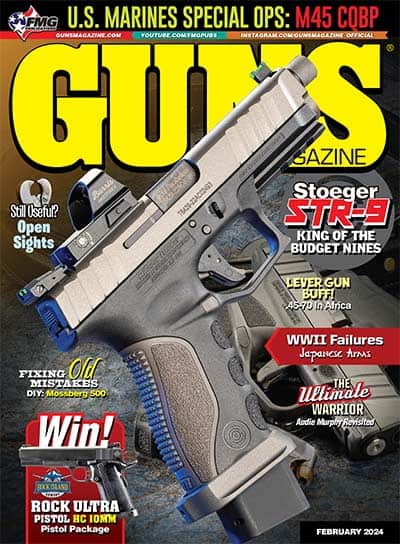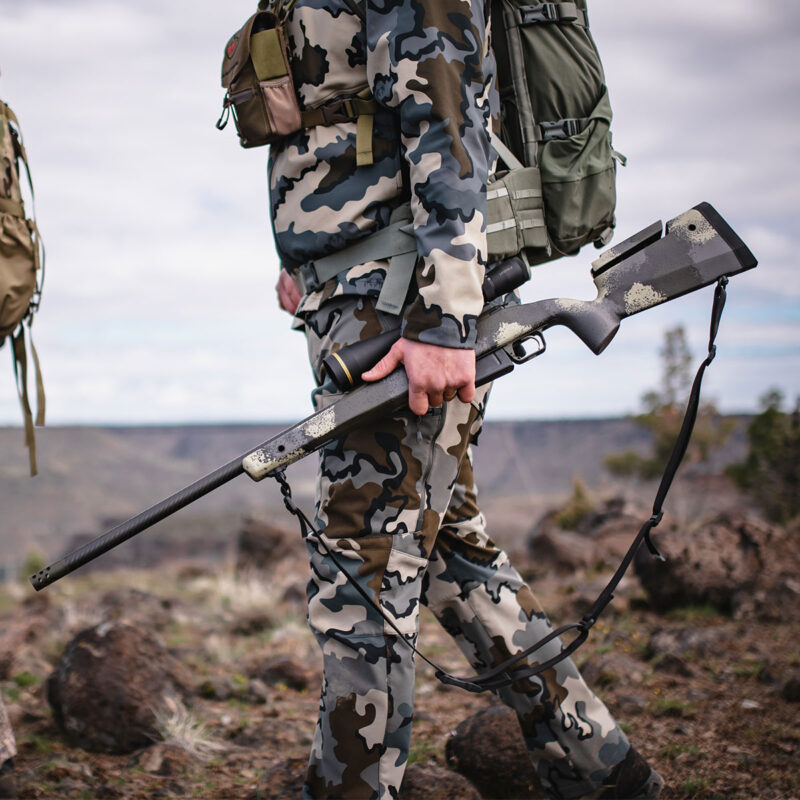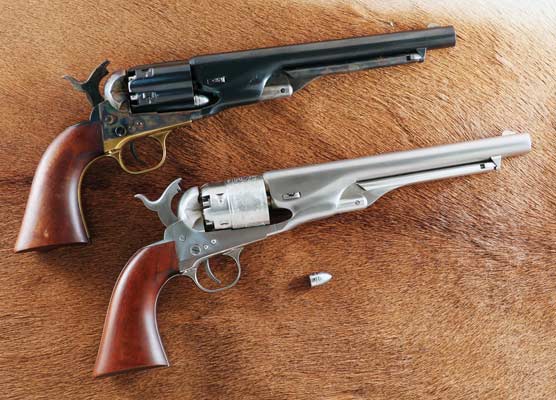The British MLE Rifle
Boer’s Love Affair With Emily
The Lee bolt-action rifle was the British service rifle from 1888–1957. It went through many design changes but retained its basic form — detachable double-stack magazine originally for eight cartridges, later holding 10, rear-locking bolt, short bolt lift, short bolt throw, two-piece stock and chambered for the .303 British cartridge. It also served other British Commonwealth nations including Australia, Canada, India and New Zealand. Though replaced by the self-loading FN rifle, its flame continued to burn as a sniper, ceremonial and special purpose rifle. The flame wouldn’t flicker out until 2016 when the Canadian Rangers finally replaced their Lee Enfield rifles.
Short-lived
The first version was the MLM, the initials standing for “Magazine, Lee Metford.” The designer was a Scots/Canadian/American named James Paris Lee, while the original rifling for black powder cartridges was designed by British Col. Metford. The shallow rifling did not have a long service life when the load was changed from black to smokeless powder and was redesigned with deeper rifling grooves at the Enfield armory. The redesigned rifle was the “Magazine, Lee Enfield” — MLE or “Emily.” It was also called the Long Lee for its 30″ barrel and near-50″ overall length. A shorter version was later adopted as the “Short, Magazine, Lee Enfield” — SMLE, or “smelly” as it was often called.
Both the MLM and MLE were used by the British military in South Africa during the Second Boer War. Many Boer settlers had trekked from their original settlements in South Africa to what was then called the Transvaal and Orange Free State. Their interest was in farming and ranching. Unfortunately for them, diamonds and gold were discovered on the land they claimed. The Boers soon realized if they wanted to keep their land and lifestyle, they would have to fight.
A most interesting book about the war is titled Commando: A Boer Journal of the Boer War by Deneys Reitz, written while he was in exile in Madagascar. Reitz joined the Boer forces at age 17 and fought throughout the war, then wrote the book while the memories were still fresh. The Boers were not so much an army as a volunteer citizen force.
Reitz wrote, “Officers and men had to supply their own horses, rifles, clothing, and equipment, and nobody received any pay … the Transvaal Government had been importing large quantities of Mauser rifles from Germany, which were sold to the burghers at a nominal figure, and as great stores of ammunition had likewise been accumulated, the commandos were very efficiently equipped.” The Mauser rifles were based on the 1893 design, chambered for the 7mm Mauser (7×57) cartridge.
“I was 17 years old and thus too young to be enrolled as a burgher. President Kruger himself solved this difficulty for me … when he heard my age, he said: ‘Well then, Mr. State Secretary, the boy must go — I started fighting earlier than that,” and he took me straight to the Commandant-General’s room close by, where Piet Joubert in person handed me a new Mauser carbine, and a bandolier of ammunition …”
Hunters Of Men
I’ve often read the Boer War was primarily a long-range shooting duel at which the Boers had an advantage due to a superior rifle and better shooting skills. Reitz presents a different picture. True, the Boers were often experienced hunters and riflemen, and were generally very good shots. But much of the fighting was at very close ranges with men using terrain as cover. Reitz describes one such action where the ranges were 30 to 40 yards. The Boer’s experience at fast shots on game gave them a big advantage.
“Both sides were maintaining a vigorous short-range rifle contest, in which the soldiers were being badly worsted, for they were up against real old-fashioned Free State Boers for whom they were no match in sharpshooting of this kind … the Free State men had eight or nine dead, and 15 or 20 wounded. The English casualties were about 200 killed and as many injured, the disparity being due to the fact that the English soldiers were no match for us in rifle-shooting.”
The fault was not with the British soldiers but in their training. Many in the British military still saw the rifle as mainly a handle for the bayonet. British soldiers were trained to fight as a unit rather than as individual marksmen. Their skill at volley and rapid fire was formidable. Of another battle, Reitz said, “(We) came under a galling point-blank fire … the moral effect of Lee-Metford volleys at 20 yards must be experienced to be appreciated. The English troops lay so near that one could have tossed a biscuit among them.”
The British MLE rifle was certainly superior to the Mauser in rapid fire, and roughly equal in terms of accuracy, reliability and power. The big advantage of the Mauser was its rapid reloading with five-shot stripper clips, or “chargers” to use the British term. Reloading the MLE magazine one round at a time, under great stress, must have been a trying experience. When Britain redesigned the MLE, rapid reloading with chargers was quickly incorporated along with improved sights and a shorter barrel. The MLE was an excellent rifle, which evolved into the splendid SMLE, which served so well in the First World War.







